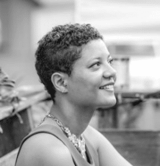Summary
From the pandemic to mass layoffs to burnout, designers have been enduring years of crisis and toxic stress. For some people, living through these kinds of events can be traumatic. Resmaa Menakem defines trauma as "anything that is too much, too soon, too fast, or for too long without being attended to by something reparative or healing." DesignOps professionals and people managers are perfectly positioned to learn about trauma and re-shape their organizations to be spaces for healing, instead of harm. In this talk, participants will understand the prevalence of toxic stress in the workplace, be able to start identifying signs of trauma within themselves, and walk away with three practical ways to create an environment of healing.
Key Insights
-
•
Mala frames workplace stress as a biological survival response, not just a mental state.
-
•
Stress triggers release of cortisol and adrenaline preparing the body for survival.
-
•
Fear is the emotional component of stress, meaning daily stress equals frequent fear.
-
•
Toxic stress occurs when stress is too intense, too fast, and prolonged without healing.
-
•
Common toxic workplace stressors include abusive relationships, layoffs, glorified workaholism, and ambiguous priorities.
-
•
Up to 79% of global employees experience significant stress and up to 19% may develop PTSD from workplace trauma.
-
•
Toxic stress impairs cognitive functioning, cutting operating IQ by half and preventing great work.
-
•
Healing toxic stress requires changing workplace conditions, not only individual coping strategies.
-
•
Polyvagal theory identifies context, choice, and connection as key biological needs for healing in workplaces.
-
•
Simple interventions like explaining the 'why' behind decisions and auditing meetings reduce stress and increase psychological safety.
Notable Quotes
"Resilience doesn’t come from enduring or tolerating suffering. It comes from healing it and changing the conditions that cause it."
"Our biological bodies are hardwired to prioritize survival above everything else."
"Stress is our nervous system going into a state of mobilization, preparing us to fight or flee a perceived threat."
"The workplaces conditions and expectations to perform faster forever are biologically impossible to sustain."
"Toxic stress is experiencing too much too fast for too long without healing."
"If you’re feeling medium stress, maybe you’ve just gotten used to a high level of stress over time."
"Toxic stress makes people dumb, reducing their cognitive ability by half."
"Workplace trauma is real and much more common than we acknowledge, causing symptoms like sleep disturbances and emotional flashbacks."
"Changing how we operate and relate to each other is the only thing in our control, regardless of organizational position."
"Admiration is the antidote for contempt and vital to creating healing work environments."
Or choose a question:
















More Videos

"Slow and intentional communication allows you to be fully present rather than distracted by constant notifications."
Marc Fonteijn Ru ButlerIncrease your confidence, influence, and impact (through a Professional Community)
December 3, 2024

"Universities in Latin America are doing a very bad job providing practical UX research training."
Victor M. GonzalezPracticing Learners and Learning Practitioners
March 10, 2021

"People with disabilities are very appreciative and willing to help us learn because they understand we may not understand their challenges."
Elana Chapman Li Wen Huang Divyen Sanganee Annabel WeinerGetting started with accessibility research
February 20, 2025

"If you have somebody on your team for three years, for five years, that’s amazing from a longevity perspective given enterprise legacy and complexity."
Karen PascoeDeveloping Experience Teams and Talent in the Enterprise
June 8, 2016

"It takes roughly one and a half times more investment to build reusable widgets, so we aim for a minimum of three adoptions to ensure ROI."
Dawn ResselFull-Stack User Experiences: A Marriage of Design and Technology
June 9, 2016

"No wiki in the world is as good as somebody who can come and tell you how to bend the rules a little bit."
Gretchen AndersonScaling the Human Center
June 8, 2017

"Matching researchers by language and culture makes children more comfortable and improves consent."
Mila Kuznetsova Lucy DentonHow Lessons Learned from Our Youngest Users Can Help Us Evolve our Practices
March 9, 2022

"Accessibility requires flexible designs, not limited or simplified designs."
Sam ProulxAccessibility: An Opportunity to Innovate
November 16, 2022

"Should you separate design from code? In some multi-framework environments, yes, it makes sense."
Nathan CurtisDesign Systems for Us: How Many One-Source(s)-of-Truth Are Enough?
January 17, 2019
Latest Books All books
Dig deeper with the Rosenbot
How can understanding financial arrangements improve a service designer’s influence in organizations?
What are the four archetypes of AI behaviors identified in this talk and how do they help alignment?
How can organizations balance the pressure to deploy AI quickly with the need for thoughtful, resilient design?
















